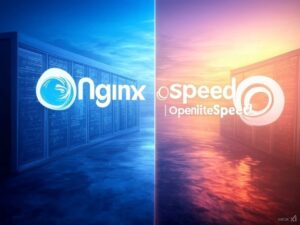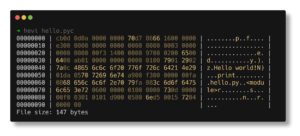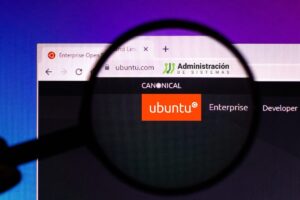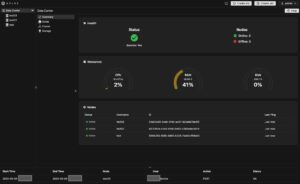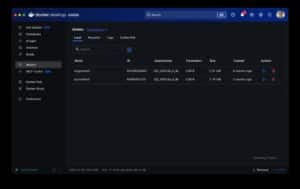For years, the API client market has been dominated by cloud-centric collaboration platforms—Postman chief among them. Bruno takes a deliberately different path: it’s open-source, fast, 100% offline, and natively Git-integrated. The pitch to teams and solo developers is simple: collaborate in your repos, without being forced into a proprietary cloud.
Below is a practical look at what changes with Bruno, where it wins over Postman, and in which scenarios it makes sense to adopt (or co-exist with) both.
What Bruno promises (and delivers) day-to-day
1) Git is the collaboration layer
- In Bruno, collections are folders on disk; each request lives in a plain-text file using the
.bruformat. - You collaborate via Git (or your VCS of choice): branches, PRs, code review, and conflict resolution—just like code.
- No proprietary workspaces, no monolithic JSON that’s painful to diff and merge.
2) 100% offline, no login, no cloud
- Bruno is a desktop app with no account concept.
- Nothing is synced to any service: requests, responses, tokens, and variables are stored locally.
- Ideal for teams that cannot or do not want data to leave their network (finance, public sector, red teams, pentesters).
3) Performance and focus
- Launches in seconds, uses little memory, and loads collections fast.
- Doesn’t try to be an “API management platform”—it focuses on testing and validating calls with a lightweight workflow.
- Declarative scripting: update post-response variables with simple expressions instead of sprawling scripts.
4) No artificial limits on collection runs
- Local collection runs are unlimited.
- Postman’s free tier limits local runs per month; with Bruno there’s no quota.
Where it diverges from Postman (and why that matters)
| Area | Postman (platform approach) | Bruno (Git-first client) |
|---|---|---|
| Working model | Collections as single JSON files inside a proprietary workspace | Collections as plain-text files in folders, versioned in Git |
| Collaboration | In Postman’s cloud (paid tiers for advanced collab) | In your repo (GitHub, GitLab, Bitbucket, on-prem) |
| Usage mode | Requires login; online dependency | Fully offline; no account or login |
| Collection runs | Limited in free tier | Unlimited locally |
| Request path | Requests can go through Postman’s proxy | Requests are made directly from your machine |
| Security model | Duplicate access control (enterprise IAM and Postman) | Reuse your Git/IAM: one source of truth for permissions |
| Data control | Collections/variables often live in their cloud | Everything is local, you own it |
| Workflow fit | A separate platform outside your dev flow | Embedded in your dev flow (branches/PRs/reviews) |
Operational translation: if your team already lives in Git and wants to avoid sprawling systems (extra access controls, audits, backups), Bruno lets you treat API collections as code. If you rely on Postman platform features (managed monitors, hosted mocks, public portals, complex workspaces), you’ll still want Postman for those.
Security & compliance: fewer surfaces, more control
- Where your data lives. Postman stores collections and sometimes variables/tokens in its cloud. Bruno keeps everything local.
- How requests leave. Postman can route via a proxy; Bruno sends requests directly from your machine.
- Permissions & audit. Postman forces a second access model; Bruno inherits your Git/IAM so you maintain one system for permissions and audits.
For many organizations this simplifies compliance (GDPR/SOC 2/ISO 27001), audits, and forensics: one less external platform to monitor, one source of truth for who changed what and when—the repo.
Developer productivity: fewer context switches, more PRs
- With Bruno, collections live next to your code (same branch, same PR, same review process).
- API changes and test changes don’t get out of sync across different systems and approval flows.
- VS Code: there’s an official extension (38k+ users) so Bruno is right in your editor.
Net result: less mental overhead moving between tools, and less drift between evolving APIs and the tests that should follow them.
Limitations & trade-offs to consider
- Not a “platform”. If you need managed monitors, hosted mocks, public doc portals, Slack/webhook integrations, etc., Bruno doesn’t aim to compete there.
- Adoption curve. If your org already invested in Postman’s cloud (workspaces, permissions, automations), migrating means aligning collections, variables, and scripts.
.bruformat. It’s plain-text and readable, but not Postman’s JSON; you’ll need to convert or rebuild selectively.
Who benefits most from Bruno?
- DevSecOps teams that want to treat collections like code (Git, PRs, code-owners).
- Regulated orgs that must not host collections/tokens in third-party clouds.
- Pentesters/red teams needing a fast, offline client with no accounts or sync.
- Startups/schools that value lightweight workflows and zero cost collaboration via Git.
Adoption guide (co-exist or migrate)
- Pilot locally with a real collection. Export from Postman (or rewrite a subset) to
.bru, verify requests, variables, and scripts. - Repo strategy. Create a collections repo or colocate each collection in the API’s repo.
- PR workflow. Use feature branches and code review for collection changes (just like code).
- Onboarding docs. Define conventions (env names, local secrets, common snippets).
- Co-existence. Keep Postman where its platform adds value (monitors, mocks, portals) and use Bruno for day-to-day dev and PRs.
FAQs
Does Bruno sync anything to a cloud?
No. Bruno is offline-only. Collections, variables, tokens, responses—everything stays on your disk. You collaborate via Git (or any VCS).
How do we collaborate without Postman’s cloud?
Collections are plain-text (.bru) files in folders. Work happens through your repo—branches, PRs, reviews—just like the rest of your code.
Are there limits to local collection runs?
No. You can run collections as many times as you like locally.
Can Bruno fully replace Postman?
It depends. If you rely on Postman’s platform features (managed monitors, hosted mocks, public portals), you’ll still want Postman. If your focus is local dev, Git, and PRs, Bruno can become your primary client and happily co-exist with Postman where it adds value.
What do we gain for security/compliance by moving to Bruno?
You centralize access control and auditing under your Git/IAM, avoid uploading collections/tokens to third-party clouds, and send requests directly from your workstation (no external proxies). Fewer surfaces, more control.
Bottom line: if you want your API client to live in your repo and PRs, without forced clouds or platform bloat, Bruno is the better fit. It doesn’t try to do everything—it focuses on testing APIs fast, collaborating via Git, and staying out of your SaaS stack. For many teams, that’s exactly what’s been missing.


